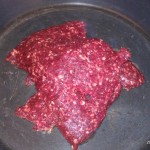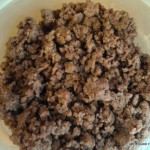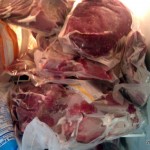When alpacas were first brought to the US they were marketed as a huggable no kill investment. Unfortunately with the down economy prices are plummeting and costs are rising, the “unwanted alpaca” is becoming a big problem that no one wants to talk about.
As a responsible breeder my goal is to breed for our emerging fiber market (meaning my herd is 90% white/beige and 10% black in color). Like many breeders I strive for the cria to be better than the dam. Female cria can usually be bred up leaving the boys to sit around, jobless. Like in the sheep/goat industry you just don’t need that many studs. Only a select few are of high enough quality to breed a better cria leaving a lot of boys out there without a job.
Culling:
The livestock definition simple: To remove an inferior animal from a herd.
As a breeder it means I have a duty to remove an alpaca that is not of breeding quality from the gene pool by castration or consumption.
International Solutions:
If you look to the wool leaders of the world, Australia and New Zealand have already been marketing the La Viandé as a brand for alpaca meat as part of their emerging alpaca industry. Let us also not forget that in South America camelids are not only raised for their fiber but also for meat which is widely available.
I truly believe a meat market is needed in the US for a few reasons.
- To help keep the “bottom” sales price for an alpaca at a level where a profit can still be realized.
- To bring sales of seed stock and stud fees to a level in line with other livestock of similar marketability such as sheep and goats.
- To increase quality of fiber available in the market
Herd Management Changes:
As of 2011 these are changes I’m making in my herd management practices.
– I will no longer be purchasing a breeding unless it comes with a female cria guarantee
– All non-breeding alpacas will be available for purchase until 24 months of age in 2 categories Pet or Meat.
- Pets – will not be registered unless requested and will be castrated before leaving to their new home.
- Meat – the alpaca purchased will be sent to a facility licensed and inspected to process the whole animal into cuts labeled “not for resale” and the vacuum packed and frozen cuts will be sent directly to the buyer.
– Non-Breeders older than 24 months will be processed for meat.
- Currently I am searching for a local USDA processor that is licensed to sell cuts for individual resale who doesn’t freak out at the word “alpaca”.
– 3-6 months before “processing” all alpacas will be moved to an organic lifestyle to detox and will be shorn no less than 4 weeks before “processing” for better fur quality.
– To educate myself further on USDA regulations for processing alpaca meat for public consumption.
Alpaca Meat:
If you haven’t tried alpaca yet I highly recommend it. To me the look and taste mostly resembles beef with a few of the cuts looking more like pork. Alpaca meat is incredibly lean with practically half the calories, cholesterol and fat of beef with the added benefits of being high in Iron and Vit A. It has totally replaced all beef and pork in my household and is very popular with guests.
End Note:
The irony of me writing this post is that I have been blessed with female cria these past 4 years. At my current herd state I do not have any alpacas that would be sent off to slaughter. I love my alpacas and even I have my select few that will always have a home even if they never sell.
I have also been very successful in re-homing alpacas as fiber pets and I am the main resource for re-homing alpacas at our local humane society’s farm.
Currently, the only alpacas I’ve culled for consumption went into my own freezer. However, I have a plan and resources ready for when the time comes.
I fully believe that La Viandé could easily be accepted by the US pallet. We just need to educate ourselves as breeders and work hard to promote it properly.
**Constructive discussion is welcome but hostile comments will not be permitted.


